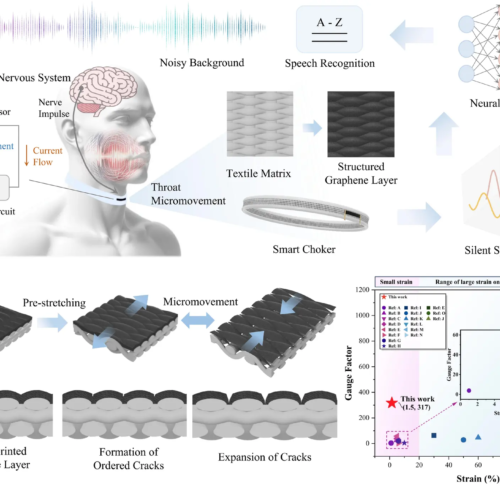New battery lasts thousands of years Scientists and engineers from the UK Atomic Energy Authority (UKAEA) and the University of Bristol have successfully created the world’s first carbon-14 diamond battery. This new type of battery has the potential to power devices for thousands of years, making it an incredibly long-lasting energy source. The battery leverages...
Tag: <span>biomed tech</span>
New biomaterial regrows damaged cartilage in joints
Northwestern University scientists have developed a new bioactive material that successfully regenerated high-quality cartilage in the knee joints of a large animal model. Microstructure of the new bioactive material. The fibers are in pink; hyaluronic acid is shown in purple. Image credit: Stupp Group Although it looks like a rubbery goo, the material is actually...
Hydrogel with ultrasound activation enables sustained drug release
September 28, 2024 by University of Michigan Researchers at Michigan Medicine have developed a composite hydrogel capable of achieving sustained, steady drug release using ultrasound as a trigger. The team behind the breakthrough believes it could revolutionize drug delivery for various medical applications, in which constant drug levels are crucial for optimal therapeutic outcomes. The...
Headband helps people fall asleep by aligning audio signals with brainwaves
September 26, 2024 by Zach Winn, Massachusetts Institute of Technology The Elemind Neuromodulation device (ENMod). (A) The primary UI of the smartphone app used to control the device. Users were given information about electrode contact using an eyeblink test and real-time signal quality of each frontal electrode. (B) Back view showing the left over-the-ear reference...
Stem cells map reveals molecular choreography behind individual variation in human development
September 25, 2024 by Johns Hopkins University School of Medicine Cell line variation in the emergence of neural fate from pluripotency (A) Spatial expression on day 6 in SR condition in SA01 and i04 lines.(B) Variation in NANOG and SOX21 expression across PSC lines. (i) Representative images. Scale bar, 100 μm. (ii) Expression levels in...
Q&A: New tech could improve care for Parkinson’s patients
September 24, 2024 by Stanford University The device being developed by Stanford Medicine researchers to enable remote Parkinson’s monitoring. It’s called the KeyDuo. Credit: Helen Bronte-StewartThe number of people living with Parkinson’s disease globally has doubled in the past 25 years. Yet the treatment and monitoring of the neurological disease seems many decades behind. Clinicians...
Graphene spike mat and fridge magnet technology to fight against antibiotic resistance
News Release 24-Sep-2024 Peer-Reviewed PublicationChalmers University of Technology image: Illustration of how the razor-sharp flakes of graphene line up together on a surface and can kill bacteria without harming healthy human cells. The bactericidal graphene surfaces developed at Chalmers University of Technology may soon be applied in medical devices thanks to a brand-new method using...
Spinning artificial spider silk into next-generation medical materials
News Release 24-Sep-2024 Peer-Reviewed PublicationAmerican Chemical Society Spinning artificial spider silk into next-generation medical materialsimage: Scientists are creating artificial spider silk by drawing strands from an array of tiny hollow needles, as shown here, similar to how arachnids do it. Credit: Adapted from ACS Nano 2024, DOI: 10.1021/acsnano.4c08557 It’s almost time to dust off the...
Adhesive cortical device enables artifact-free neuromodulation for closed-loop epilepsy treatment
September 19, 2024 by Institute for Basic Science Overview and operation principle of a shape-morphing cortex-adhesive (SMCA) sensor. Credit: Adapted from Nature Electronics (2024). DOI: 10.1038/s41928-024-01240-xA team of researchers has developed a soft cortical device that could revolutionize the treatment of epilepsy and other neurological disorders. The group is led by Professor Son Donghee and...
Brainy choker speaks nonverbal wearers’ unspoken words
By Ben CoxworthSeptember 17, 2024 The prototype device identifies tiny throat movements that accompany the silent mouthing of specific words Depositphotos There could soon be a powerful new aid for people who are unable to speak. British scientists have developed a choker that detects its wearer’s silently mouthed words, and converts them into audible synthetic...


